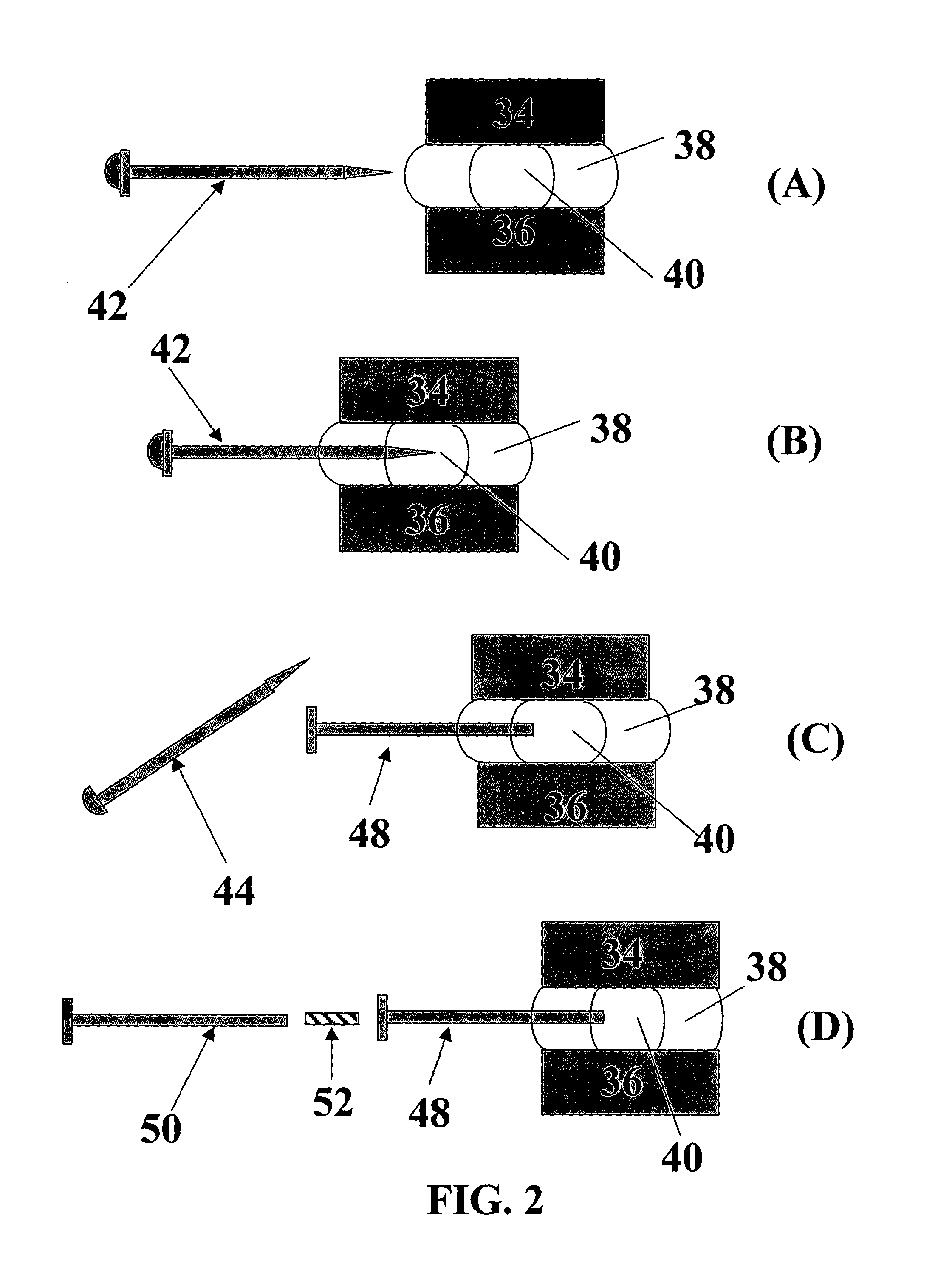Methods and devices for the treatment of intervertebral discs
a technology of intervertebral discs and treatment methods, which is applied in the direction of prosthesis, peptide/protein ingredients, bandages, etc., can solve the problems of polymeric and metallic materials, nerve damage, muscle weakness and even paralysis, disintegration in the body, etc., and achieves the effect of reducing the risk of injury, and improving the quality of li
- Summary
- Abstract
- Description
- Claims
- Application Information
AI Technical Summary
Problems solved by technology
Method used
Image
Examples
first embodiment
[0048] the device comprises at least two (2) materials: 1) an active agent (e.g., a therapeutic agent) and 2) a binder or matrix material. The binder is preferably an inert material. The device can be of any size and shape. The device is preferably compact in cross-section for delivery into the disc space though a small annular opening in the disc annulus.
[0049]The proposed methods and devices offer various advantages and can be used for various treatments of the ivt disc including, but not limited to, chemonucleolysis, pain-management, disc repair, and disc regeneration.
[0050]Set forth below are descriptions of various embodiments of devices comprising a single active agent and methods of using these devices to treat an intervertebral disc.
embodiment 1
[0051] According to this embodiment, chymopapain in powder form is mixed with a hygroscopic bioresorbable polymer in appropriate ratio. The mixture is consolidated under pressure and / or heat into elongated rods with a diameter of approximately 1 mm. This device can be used for the treatment of patients with a protruded disc and / or sciatica that meet the criteria for chemonucleolysis. The patient can be worked up as if he or she would receive an injection of chymopapain solution. For implantation, a hypodermic needle of an appropriate size (e.g., having an inner diameter slightly larger than the device outer diameter) can be inserted into the disc space until the needle tip passes through the outer and inner annulus fibrosis to the center of the disc. The needle tip location can be verified using fluoroscopy. An appropriate length of implant is then inserted into the needle and a stylet is used to push the rod forward until it is deposited near the center of the nuclear disc space. T...
embodiment 2
[0052] According to this embodiment, pain medication in powder form is mixed with a bioresorbable polymer in an appropriate ratio. The mixture is consolidated under pressure and / or heat into elongated rods with a diameter of approximately 1 mm. This device is proposed for treatment of patients with discogentic pain.
[0053]For treatment, the patient can be worked up as if he or she would receive an injection of pain medication in liquid form. A hypodermic needle with appropriate size (e.g., an inner diameter slightly larger than the outer diameter of the implant) is inserted into the disc space until the needle tip passes through the outer and inner annulus fibrosis to the center. Needle tip location can be verified using fluoroscopy. An appropriate length or lengths of implant is then inserted into the needle and a stylet or other pushing device is used to push the implant forward until it is deposited near the center of the nuclear disc space. The needle is then removed and the impl...
PUM
| Property | Measurement | Unit |
|---|---|---|
| diameter | aaaaa | aaaaa |
| diameter | aaaaa | aaaaa |
| diameter | aaaaa | aaaaa |
Abstract
Description
Claims
Application Information
 Login to View More
Login to View More - R&D
- Intellectual Property
- Life Sciences
- Materials
- Tech Scout
- Unparalleled Data Quality
- Higher Quality Content
- 60% Fewer Hallucinations
Browse by: Latest US Patents, China's latest patents, Technical Efficacy Thesaurus, Application Domain, Technology Topic, Popular Technical Reports.
© 2025 PatSnap. All rights reserved.Legal|Privacy policy|Modern Slavery Act Transparency Statement|Sitemap|About US| Contact US: help@patsnap.com



